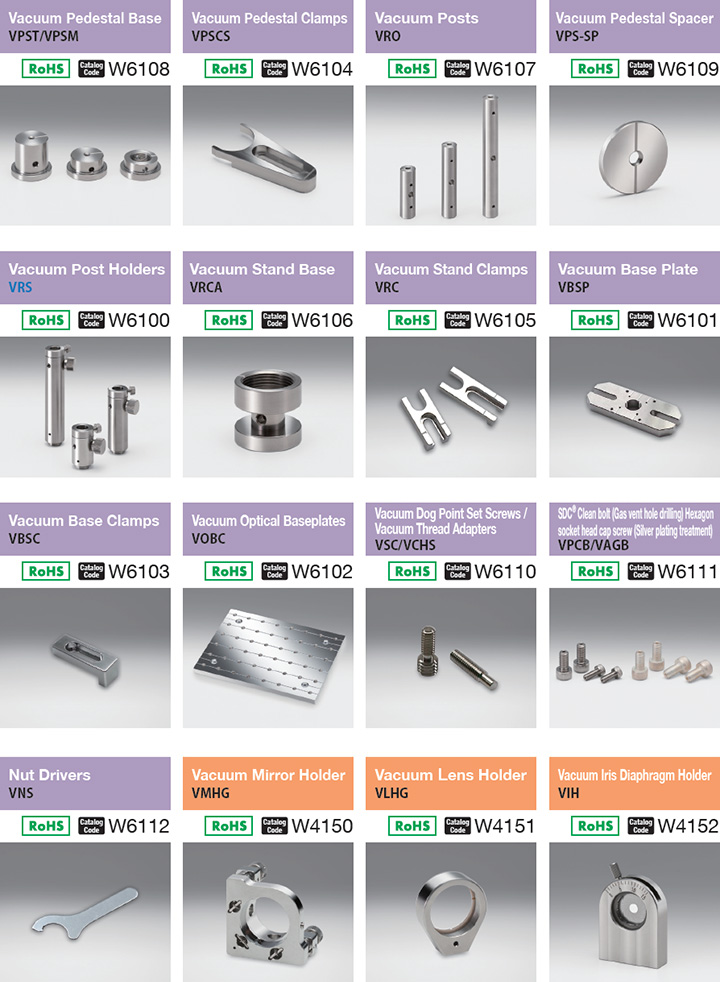- HOME >
- Base Guide >
- Guidance of Vacuum Products

Availability of vacuum products have been sorted by the degree of vacuum. Our vacuum products, with considering every single factor such as the material, design, cleaning, packing and evaluation, it has been completed as a product that can reach ultra-high vacuum.
| Environment | Clean room | Low-medium vacuum | High vacuum | Ultra-high vacuum |
| Degree of vacuum | 105Pa | 10-1Pa | 10-5Pa | 10-9Pa |
| Exhaust system | Fan | Mechanical pump | Diffusion pump | Turbo-molecular pump Ionization pump, etc. |
| Major factor | Cleanliness | Residual gas | Volatile substance | Surface adsorption |
| General aluminum parts | ◯ Need Cleaning | △ Need vent holes | × Outgas from anodizing |
× Baking generate contamination |
| Stainless steel parts | ◯ Need Cleaning | △ Need vent holes | △ Need vacuum grease |
× Baking generate contamination |
| Vacuum compatible products | ◎ Already cleaned | ◎ Vent holes pre-designed | ◎ Vacuum grease pre-applied | ◎ Baking applicable |
Outgas from the material itself can be a problem in the ultra-high vacuum. Our products have selected the best material by examining the amount and type of outgas.
● Stainless steel (SUS316L) …… Strong corrosion resistance when exposed to high temperature baking, and less outgassing.
● Aluminum (A6061) …………… Special surface treatment is used to reduce the degradation of the surface and outgassing.
The other parts also use the material that is suitable in the ultra-high vacuum.
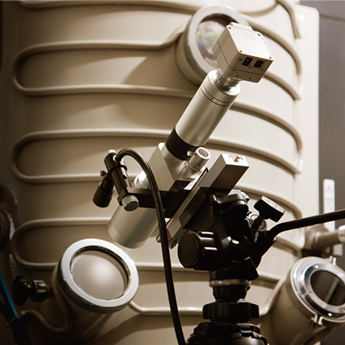
Screw holes and insert parts create enclosed space, and there is a possibility that air is trapped in this spade. This creates outgas when pumping down the vacuum and causing instability of the vacuum. In our design, holes or grooves for degassing is being processed on all of the screw holes and insert parts that could create an enclosed space. This allows for stabilization of the vacuum in a short period of time even at high vacuum environment.
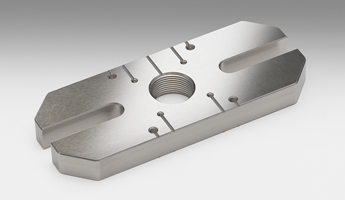
In the ultra-high vacuum, gas adsorbed on the metal surface can be a problem. Stainless steel and aluminum are protected from corrosion by creating an oxide film immediately after processing. However, when oil and water is present on the surface after processing, oxide film can not be generated properly and it may cause outgassing. For this reason, proper cleaning is first carried out for the parts and later for the finished product also.

Products are assembled in a clean booth and packed in a clean room. Packaging is also different from the normal packaging. It is delivered in a special packing method, and a deterioration of quality which become problematic in a high vacuum environment does not occur.
● Wrap the product with aluminum foil
● Vacuum packing using special bags
It is recommended to unpack the vacuum products inside the clean room or vicinity of the vacuum chamber. If the vacuum product has been left for a long time after unpacking, there is a possibility that quality with respect to the vacuum is degraded.
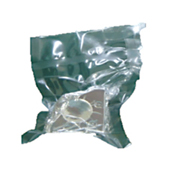
Evaluation of the outgassing of the finished product to are conducted using the actual vacuum chamber. The following data is an example of the outgas measurement of the vacuum mirror mount (VMHG-50.8) using the conductance modulation method. It also shows the mass ratio analysis of the outgas. Through such evaluation, we have confirmed that the design and production process of vacuum products are appropriate. These data will not be attached to the product. If the data is necessary please request us in advance. Data attachments are available at an additional fee.
| Pump down time h |
Outgas 〔Pa・m3・s-1/unit〕 |
| 1 | 2.6E-07 |
| 2 | 1.8E-07 |
| 3 | 7.6E-08 |
| 4 | 3.9E-08 |
| 5 | 2.0E-08 |
The value measured with the conductance modulation method will be different depending on the conductance (ex. exhaust speed and the degree of vacuum) of the vacuum system. Please use the data for the confirmation of outgassing decay or the relative comparison of the products. Please contact us if the comparison is necessary with other evaluation methods.
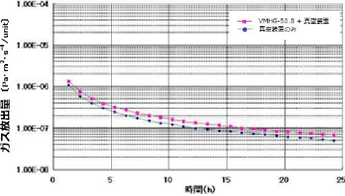
Type : Turbo-molecular pump
Model : STP-301
Manufacturer : Seiko Seiki (now Edwards)
Exhaust speed : 300 ℓ /s
Type : Quadrupole mass spectrometer
Model : M-201QA-TDM
Atomic mass number range : 1〜200
Manufacturer :Canon Anelva
| 10 hours | 24 hours | ||
| Vacuum pressure(Pa) | 3.06×10-6 | 1.42×10-6 | |
| Outgas speed (Pa・m3・s-1・m-2) |
2.15×10-6 | 1.08×10-6 | |
| Total ion current value(A) | 1.68×10-10 | 1.40×10-10 | |
| Atomic mass number | Mass ratio (10 hours) |
Mass ratio (24 hours) |
Gas molecules |
| 1 | 2.11 | 1.94 | H2 |
| 2 | 0.51 | 0.47 | H2 |
| 12 | 0.27 | 0.28 | CO、CO2 |
| 14 | 0.19 | 0.50 | N2 |
| 18 | 4.74 | 4.86 | H2O |
| 22 | 0.22 | 0.20 | CO2 |
| 28 | 1.52 | 0.36 | CO、CO2、N2 |
| 32 | 0.46 | 0.26 | O2 |
| 40 | 0.21 | 0.24 | Ar |
| 44 | 0.31 | 0.32 | CO2 |
